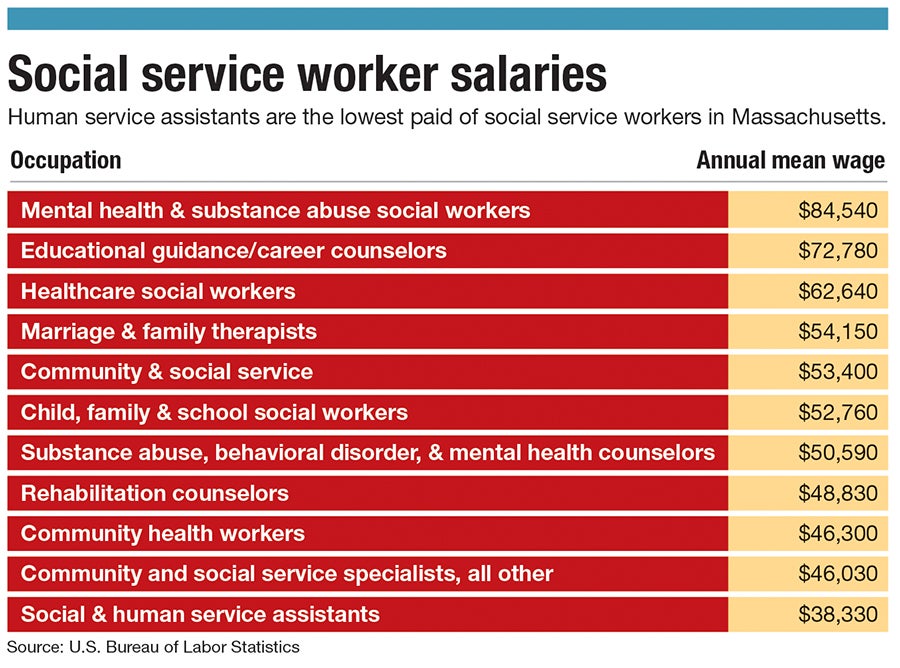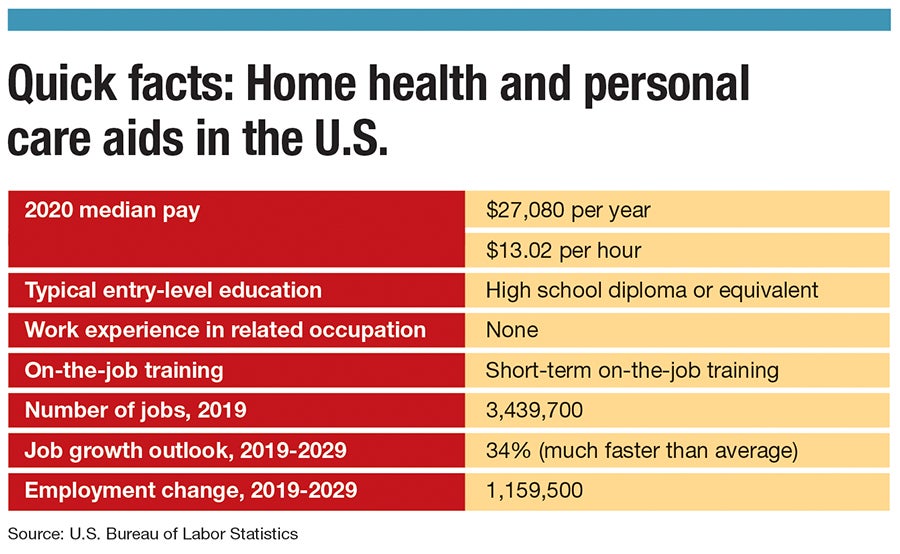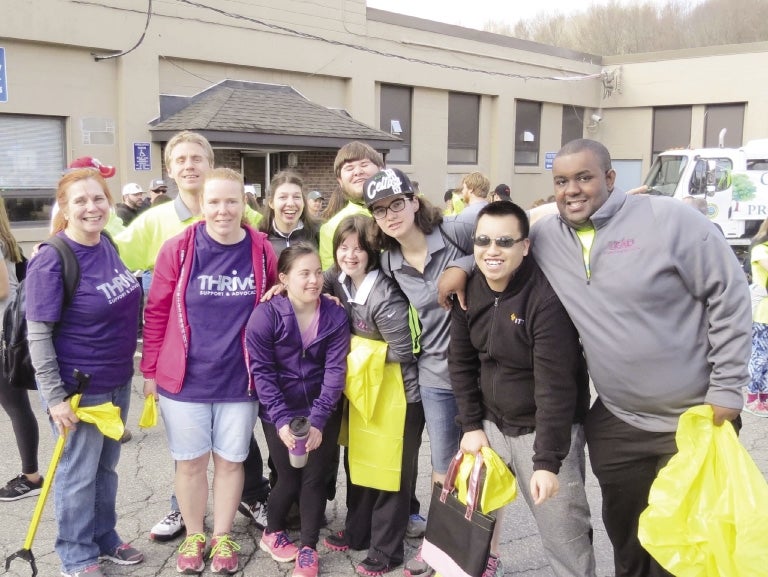Low wages are just one of several compounding factors leading the human services industry into a staffing shortage crisis.
Get Instant Access to This Article
Subscribe to Worcester Business Journal and get immediate access to all of our subscriber-only content and much more.
- Critical Central Massachusetts business news updated daily.
- Immediate access to all subscriber-only content on our website.
- Bi-weekly print or digital editions of our award-winning publication.
- Special bonus issues like the WBJ Book of Lists.
- Exclusive ticket prize draws for our in-person events.
Click here to purchase a paywall bypass link for this article.
Sean Rose got his start in the human services industry as a direct support professional in a home for teens, making about $13 an hour. More than 20 years later, Rose is now the CEO and president of Thrive Support & Advocacy, a Marlborough-based nonprofit for individuals with developmental disabilities.

The median salary for a direct support professional today? Exactly the same.
Low wages are just one of several compounding factors leading the human services industry into a staffing shortage crisis.
Rose said his organization lost about half of its part-time staff during the coronavirus pandemic and has dozens of vacancies for full-time, direct care positions.
The pandemic only antagonized an already daunting crisis, however. In 2017, a report by National Core Indicators revealed an 8% vacancy rate among full-time direct support professionals.
Massachusetts’ human services sector, which includes care and treatment for people with disabilities, substance abuse, and mental health challenges, makes up more than 185,000 jobs, said Michael Weekes, president and CEO of the Massachusetts Council of Human Service Providers, better known as The Providers’ Council.
“They’re our safety nets,” said Weekes. “If you didn't have someone taking care of your elderly parent or a person with a disability that you’re caring for, you couldn't come to work and then your productivity is hard.”
Human services is a rapidly growing industry in the state, accounting for roughly 40% of all community and social service jobs, according to the U.S. Bureau of Labor Statistics.
From 2004 to 2014, the industry grew by 58% and is expected to expand by another 25,000 jobs by 2024. Many of these jobs will include direct support professionals, home health aids, and personal care aids, said a 2017 report from the Providers’ Council.
“The thing that bothers us the most in this field is the fact that our job isn’t looked at as important as it is,” said Kim Price, a direct support professional at the Arc of Opportunity nonprofit in Fitchburg. “We take care of living, breathing human beings. I think people forget that until they’re in the position where they need to be taken care of.”

Pandemic problems
COVID-19 presented new challenges as most caregivers were unable to work from home, and some isolated from their own families to care for individuals who were unable to wear masks.
Many workers with a second job or with children home from school were forced to leave human services, accounting for the significant drop in part-time employees, said Weekes.
Now, the increase in job opportunities and wages at supermarkets, restaurants, and retail stores has pulled caregivers into other industries, said both Weekes and Rose.
The patients “are not inanimate objects. You’re dealing with their trials and tribulations every day that you wouldn’t with a box of Rice-A-Roni,” Price said.
Along with nationwide staffing shortages in almost every sector, the human services industry is most challenged to recruit, retain, and develop its workforce, said Weekes.
Retention is particularly challenging among part-time caregivers, who have a 44% turnover rate, according to the NCI report.
“Part of the treatment is to try to keep some consistency between those who are helping and the people that are being helped,” said Weekes. “Some of our programs, unfortunately, appear to be like revolving doors with people coming in and out. That's not fair to the clients.”

Solutions: Professional development & wages
Thrive collaborated with Quinsigamond Community College in Worcester to provide training and development opportunities for staff, as well as extensive COVID-19 training to help them in future healthcare roles.
Professional development and growth opportunities are vital for retention, as well as helping workers make a career in the industry, said Rose. It’s an area organizational leaders can control, unlike wage rates.
Executives of human services institutions are at the mercy of the Massachusetts Department of Developmental Services to fund their organizations and set employee wages.
“We need to compensate these folks properly, not just in a pandemic, but we need to compensate them properly overall,” said Rose. “We just don't pay our staff really enough for them to survive, frankly.”
It’s not for lack of trying. Rose was forced to collateralize one of Thrive’s group homes in order to compensate employees with additional isolation pay and overtime during the pandemic.
The DDS budget increased 2.3% this year up to $44.6 billion, but people like Weekes are advocating for more systemic change to address the crisis. This year, a team of human services organizations negotiated $160 million from the Chapter 257 Reserve to go toward caregivers’ wages.
“There is money available. So, it's not a matter of can we do it – it’s a matter of will and priorities,” said Weekes, who was a leader in negotiating the $160 million.
Weekes’ organization has been instrumental in pushing forward legislation promises to eliminate the pay disparity between state workers and human services workers by 2027. The bill was referred to a joint Massachusetts legislative committee in April.

